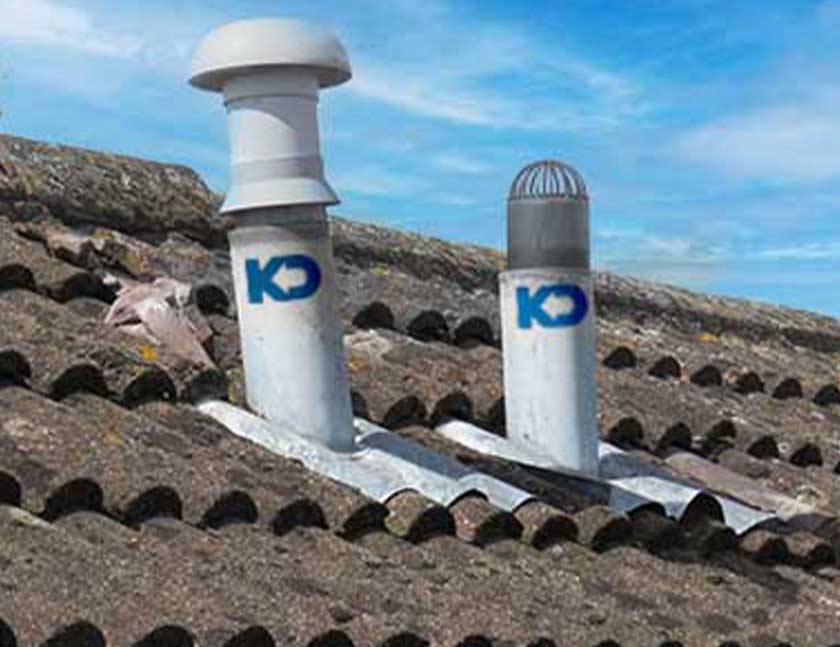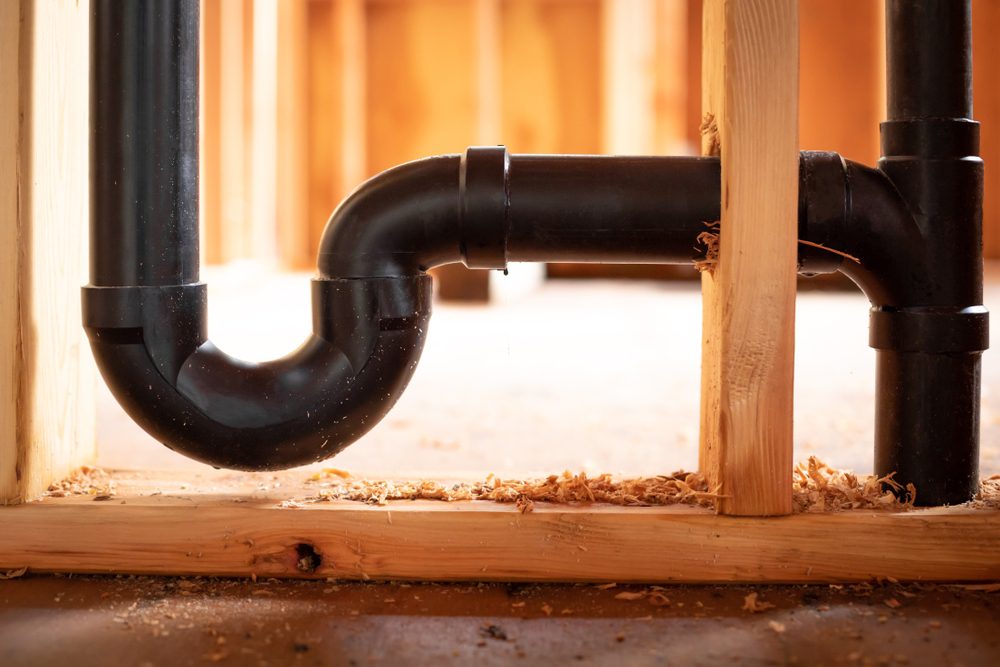How Adequate Ventilation is Essential in Plumbing Systems
How Adequate Ventilation is Essential in Plumbing Systems
Blog Article
We've stumbled upon this great article relating to Essential Plumbing Vent Pipes: Understanding Their Role below on the web and thought it made sense to discuss it with you in this article.

Appropriate ventilation in pipes systems is frequently overlooked, yet it is crucial for preserving the capability and security of your home's plumbing. Air flow assists regulate air pressure, avoid the build-up of unsafe gases, and make sure the efficient removal of waste. In this guide, we will certainly discover the relevance of proper plumbing ventilation, exactly how it works, and the advantages it offers your plumbing system.
Understanding Air Flow in Plumbing
Air flow in plumbing describes the network of pipelines that enable air to flow through the drain system. These vents serve multiple purposes, including managing atmospheric pressure within the pipes, avoiding sewage system gases from entering the home, and aiding in the smooth flow of wastewater.
Exactly How Air Flow Works in Plumbing Systems
Atmospheric Pressure Law
Appropriate ventilation maintains well balanced atmospheric pressure within the plumbing system. When water moves through pipes, it displaces air. Without appropriate air flow, this displacement can create negative stress, resulting in slow down drains or siphoning of water from traps, which can create unpleasant smells to leak right into the home.
Protecting Against Drain Gas Build-up
One of the most crucial features of pipes vents is to avoid sewage system gases, such as methane and hydrogen sulfide, from accumulating within the home. These gases can present significant wellness dangers and are very flammable. Vent pipelines enable these gases to leave securely outdoors.
Aiding in Waste Elimination
Air flow helps in the effective elimination of wastewater by protecting against airlocks in the water drainage system. When air can stream easily via the vents, it permits water and waste to stream smoothly through the pipelines, reducing the threat of blockages and backups.
Sorts Of Plumbing Vents
Key Stack Vent
The main pile vent, likewise referred to as the air vent stack, is the primary air vent in a plumbing system. It prolongs from the major drain align through the roof covering, allowing gases to run away and fresh air to enter the system.
Branch Vent
Branch vents link to the major stack vent and offer specific fixtures, such as sinks, bathrooms, and showers. These vents make certain that each fixture has appropriate air flow to function appropriately.
Air Admission Valve (AAV).
An Air Admittance Shutoff (AAV) is a one-way shutoff that allows air to go into the plumbing system without the requirement for a typical vent pipe prolonging via the roofing system. AAVs are generally used in restorations or locations where mounting a standard vent is impractical.
Indicators of Poor Air Flow in Pipes.
Slow Draining Fixtures.
If your sinks, bathtubs, or bathrooms are draining gradually, maybe a sign of poor air flow. Insufficient air flow can create a vacuum cleaner result, making it tough for water to drain properly.
Gurgling Seems.
Gurgling sounds originating from drains are frequently a result of air being drawn with water traps due to negative pressure in the pipes. This is a clear indicator of not enough ventilation.
Undesirable Smells.
Sewage system odors inside your home are a red flag that your plumbing system is not appropriately aerated. This could mean that sewage system gases are not being effectively vented outside, causing potentially harmful conditions.
Typical Ventilation Mistakes.
Poor Vent Sizing.
Using undersized air vent pipelines can lead to bad air circulation and stress discrepancies in the system. It's essential to use vents that satisfy the certain needs of your pipes system.
Improper Vent Positioning.
Placing vents too far from the components they offer can lower their performance. Correct placement makes certain that air can stream freely and successfully through the system.
Disregarding Code Demands.
Building regulations offer certain standards for pipes air flow. Neglecting these codes can lead to a system that stops working to work properly and may cause expensive repair services or carcinogen.
Benefits of Proper Ventilation.
Enhanced System Performance.
Appropriately ventilated pipes systems operate more successfully, with fewer obstructions, faster draining, and much less pressure on the pipes. This performance extends the life expectancy of the plumbing system.
Improved Air Quality.
By preventing drain gases from entering your home, correct air flow adds to better interior air high quality, making your living atmosphere healthier and extra comfortable.
Protecting Against Water Damage.
Ample ventilation assists protect against water from being siphoned out of catches, which can lead to sewer gases going into the home and triggering water damage in time.
Steps to Make Sure Correct Ventilation.
Consulting Plumbing Codes.
Always get in touch with neighborhood plumbing codes when designing or customizing your plumbing system. These codes provide the essential standards for proper airing vent and guarantee your system meets safety and security requirements.
Routine Inspection and Maintenance.
Normal assessments can aid identify prospective air flow concerns prior to they come to be significant troubles. Upkeep jobs, such as cleaning air vent pipelines and checking for clogs, are necessary for keeping the system in good working order.
Specialist Setup.
For brand-new setups or significant adjustments, it's a good idea to work with a professional plumbing technician. They have the competence to make certain the ventilation system is correctly developed and installed according to code.
Conclusion.
Correct ventilation is a crucial component of any pipes system, making sure that it functions successfully and securely. By comprehending the importance of ventilation, identifying the indicators of inadequate ventilation, and taking steps to maintain your system, you can prevent pricey problems and secure your home's air quality.
4 Things You Should Know About Your Plumbing Vents
What Plumbing Vents Are
Also called a vent stack, a plumbing vent is a vertical pipe attached to your drain line that runs through your roof. The plumbing vent pipe, or plumbing air vent, removes gas and odors from your plumbing system and allows fresh air to enter the pipes, helping the water to flow out of the drain pipes.
What Plumbing Vents Do
Plumbing vents have two basic functions. One of which is to allow unpleasant smelling wastewater and sewer gasses to escape your plumbing system instead of entering your home. Plumbing vent pipes are typically located on roofs, away from windows, to ensure the fumes exit the home completely.
The other function of the plumbing vent is to move fresh air into your plumbing system. This helps move water through every plumbing fixture in your house, like toilets and sink drains. Think of the way in which you need to let a little air into the bottle as you pour soda in order to make the drink flow smoothly.
Different Types of Plumbing Vents
True vent: This is the most common vent option. In simplest terms, a true vent is a vertical pipe attached to your drain line that exits through the roof. They often function as the main vent that other fixtures can connect to. Re-vent pipe or auxiliary vent: Attached to the drain line near specific plumbing fixtures, re-vent pipes run up and over to connect to the main vent. Common vent: Two plumbing fixtures installed on opposite sides of a wall are typically tied into the vent stack using something known as a sanitary cross. Wet vent: This venting option operates as a drain pipe and a vent at the same time. Wet vent drainage systems drain water from one fixture while venting the air from another. Although they’ve been used for over 100 years, wet vent systems have only recently been added to the plumbing code in many areas. If you’re planning on installing one in a bathroom remodel, make sure you check your local code prior to construction. Loop vent: For free-standing fixtures like kitchen island sinks, loop vents are ideal. These vent pipes run under the floor, rise from the P-trap, and create a loop inside the cabinet sink. Air admittance valve: An AAV is a one-way mechanical valve typically installed at the site of the plumbing fixture. AAVs allow venting to occur without having to tie into a larger venting system. They’re ideal for venting fixtures where you aren’t able to easily connect to an existing vent system. Common Plumbing Vent Issues
Although vent pipes typically don’t have water flowing through them, they’re still subject to many typical plumbing issues. For example, clogs are one of the most common problems associated with sewer vent pipes. If your vent pipe gets clogged, all of your plumbing fixtures tied into the vent stack will be affected.
A sink with a slow drain that bubbles and gurgles or a strong sewage smell around your toilet are both indicators that your toilet vent pipe is clogged. Because most vent pipes exit through the roof, old leaves, twigs or even a bird’s nest could be clogging the pipe.
Clogs in your vent pipe system cause a buildup of negative pressure, meaning that water won’t be able to flow out of your home very well. It’s similar to putting your finger over the opening of a straw to trap water inside. When you remove your finger, the water is able to flow out of the straw.
If you suspect you have any blockage in your vent, make sure you have a professional come examine the situation. Left unchecked, a blocked air vent can lead to other costly repairs, like leaks and sediment buildup.
Under Pressure
Pipe vents are essential aspects of a home’s plumbing system. Owning a home means learning about all sorts of things you never put much thought into before. But by understanding as much as you can about the important systems of your home, you can keep those budgets intact and those anxiety levels low.
https://www.homeserve.com/en-us/blog/home-improvement/plumbing-vents/

I am very intrigued by What Are Plumbing Vents and Why Are They Important? and I really hope you enjoyed reading the new article. For those who enjoyed reading our blog post if you please be sure to pass it around. I enjoy your readership.
Book Your Appointment Report this page